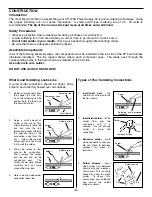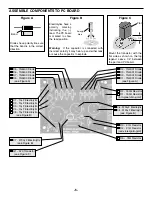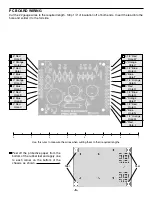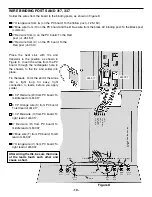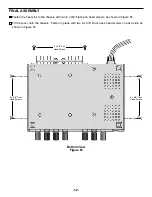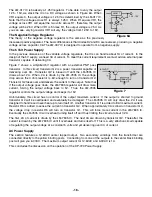
-17-
1. AC voltage is supplied to the rectifier stages by the . . .
A. step up transformer.
B. step down transformer.
C. 1 to 1 transformer.
D. AC to DC transformer.
2. The secondary windings of the transformer are . . .
A. 90
O
out of phase.
B. 180
O
out of phase.
C. 270
O
out of phase.
D. 320
O
out of phase.
3. Diodes allow current to flow . . .
A. when the anode is more negative than the cathode.
B. when the cathode is more positive than the anode.
C. in one direction.
D. when a negative or positive voltage is on the anode.
4. What circuit is more efficient for rectifying AC to DC?
A. Hartley oscillator.
B. Half-wave.
C. Schmitt trigger.
D. Full wave.
5. The DC voltage is smoothed by using a . . .
A. half-wave rectification circuit.
B. small value capacitor with a high voltage value.
C. Large value capacitor.
D. 90
O
out of phase rectification circuit.
6. An inefficient rectification circuit usually contains . . .
A. large gaps between cycles.
B. twice the AC voltage needed.
C. more diodes.
D. all of the above.
7. The maximum current that a diode can handle is determined by . . .
A. the transformer’s current rating.
B. the amount of AC ripple.
C. three times the diode rating.
D. peak current rating.
8. The LM-317 will shut down when . . .
A. the output voltage is too high.
B. no current is being drawn.
C. the junction overheats.
D. the output voltage drops to 1.25V.
9. The LM-317 regulator contains . . .
A. a pass transistor.
B. a constant current source.
C. a differential amplifier.
D. all of the above.
10. The LM-317 is basically . . .
A. a 1.25V regulator.
B. a 6.25V regulator.
C. a 2.5V regulator.
D. a negative voltage regulator.
QUIZ
Answ
ers:
1. B
, 2.
B, 3.
C, 4.
D, 5.
C, 6.
A, 7. D
, 8.
C, 9.
D, 10.
A


